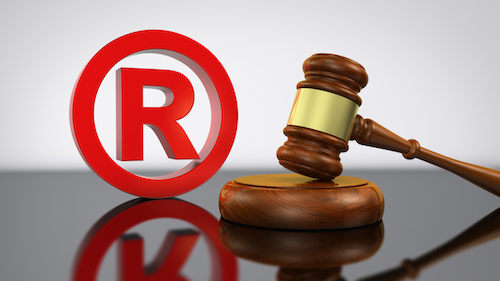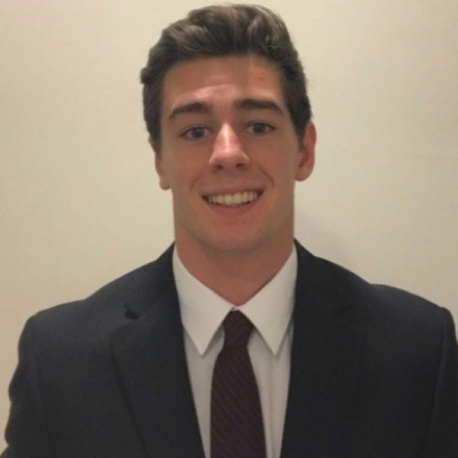“[T]he jurisdictional limits on the TTAB that accompany its role as the primary venue for narrow questions of trademark registration ensure that proceedings before it do not carry claim preclusive effect against subsequent Article III infringement proceedings under section 43(a).”
 On September 17, the United States Court of Appeals for the Third Circuit issued a precedential decision that affirmed in part, reversed in part, and remanded a decision by the District Court for the District of New Jersey, holding that trademark cancellation proceedings before the Trademark Trial and Appeal Board (TTAB) do not preclude infringement claims in federal district court.
On September 17, the United States Court of Appeals for the Third Circuit issued a precedential decision that affirmed in part, reversed in part, and remanded a decision by the District Court for the District of New Jersey, holding that trademark cancellation proceedings before the Trademark Trial and Appeal Board (TTAB) do not preclude infringement claims in federal district court.
In 1969, David Beasley formed a band named “The Ebonys” in Camden, New Jersey. The Ebonys were one of many bands that helped create the “Philadelphia Sound” which incorporated elements of soul, funk, and disco. The Ebonys achieved some commercial success in the 1970s but failed to reach the notoriety of other groups. As the decades wore on, the Ebonys’ popularity faded, though Beasley alleges they performed continuously since their formation. In the mid-1990s William Howard joined the band, and in 1997, Beasley obtained a New Jersey state service mark for THE EBONYS. Relations between Howard and Beasley soured and the pair parted ways. Each artist believed themselves the owner of the Ebonys name, and in 2012, Howard obtained Registration No. 4,170,469 (the ‘469 mark) for THE EBONYS, as a federal trademark.
Pro Se Petitions
Beasley filed two pro se petitions with the TTAB. In the first petition, Beasley asked the TTAB to cancel the ‘469 mark in 2013, alleging that Howard had defrauded the United States Patent and Trademark Office (USPTO). The petition explained the Ebonys’ 1969 founding, the New Jersey service mark Beasley had obtained, and Howard’s arrival and departure from the band. The TTAB dismissed the petition in 2014, holding that Beasley failed to show that Howard defrauded the USPTO. In 2017, Beasley filed a second petition with the TTAB which argued again that Howard defrauded the USPTO and that there was a likelihood of confusion between Beasley’s THE EBONYS mark and the ‘469 mark. The TTAB dismissed the second petition on the ground of claim preclusion, reasoning that Beasley’s 2017 fraud claim rested on the same facts as his 2013 fraud claim and that Beasley lost the opportunity to assert his likelihood-of-confusion claim, because it rested on the same transactional facts as the 2013 fraud claim.
Infringement Claim Precluded
Unsatisfied with the results from the TTAB proceedings, Beasley filed suit District Court in 2019. Beasley asked the district court to “vacate trademark ownership of” the ‘469 mark, award him monetary damages, and allow him to register his own EBONYS trademark with the USPTO. Howard moved to dismiss Beasley’s complaint on the grounds of claim and issue preclusion. The district court granted the motion, reasoning that claim preclusion barred Beasley from asserting the claim because it tuned on facts and legal theories that were all actually litigated in the 2017 petition or could have been raised in 2013. The district court further concluded that despite the fact that Beasley now sought damages, a remedy not pursued at the TTAB, claim preclusion applied. Beasley appealed.
The Limits of Claim Preclusion
Beasley’s appeal was limited to whether the district court properly dismissed his section 43(a) infringement claim, so the central issue is whether Beasley’s prior losses in the cancellation proceedings before the TTAB preclude his section 43(a) claim before the district court.
The doctrine of claim preclusion, the Third Circuit reasoned, protects defendants from the risk of repetitive suits involving the same cause of action once “a court of competent jurisdiction” has entered a “final judgment on the merits.” The prior judgments preclusive effect extends beyond the claims actually brought by the plaintiff to any claims the plaintiff could have asserted. Further, claim preclusion prevents recovery based on a different theory, if the events underlying the two suits are essentially the same. Citing In re Healthcare Real Est. Partners, the 3rd Circuit stated that “when a defendant seeks to invoke claim preclusion baes on a federal tribunal’s judgment, we require ‘(1) a final judgment on the merits in a prior suit involving (2) the same parties or their privies and (3) a subsequent suit based on the same cause of action.” In re Healthcare Real Est. Partners, LLC, 941 F.3d 64, 72 (3d Cir. 2019). All three elements were present here. However, the Third Circuit noted that claim preclusion has its limits. Specifically, citing Est. of Roman, the Third Circuit reasoned that if the plaintiff “was not at liberty to assert” certain claims in a prior forum of limited jurisdiction, those claims would not be precluded. Est. of Roman v. City of Newark, 914 F.3d 789, 805 (3d Cir. 2019). Therefore, what is determinative is whether Beasley’s claim could have been brought during his TTAB petitions.
The TTAB is not a general-purpose tribunal for trademark disputes. Citing FirstHealth of Carolinas, the Third Circuit concluded that the TTAB has limited jurisdiction “to determine only the right to register” a trademark and cannot “decide broader questions of infringement or unfair competition.” FirstHealth of Carolinas, Inc. v. CareFirst of Md., Inc., 479 F.3d 825, 828 (Fed. Cir. 2007). Therefore, the TTAB only considers narrow issues and cannot dispense relief beyond whether or how the USPTO registers a mark.
Section 43(a), which Beasley sued under, is broad, it extends beyond the statutorily prescribed grounds on which the TTAB can cancel a mark under section 14 of the Lanham Act. In an infringement proceeding brought under section 43(a), a district court will consider the full range of a mark’s usages, not just those in the application. Since the TTAB has no jurisdiction to consider whether an infringer’s use of a mark damages a petitioner seeking cancellation, a section 43(a) claim is not one that could have been brought during the TTAB proceeding. Therefore, the Third Circuit held that “a limit to claim preclusion applies to cases, like this one, where a plaintiff seeks damages or an injunction in a section 43(a) infringement action after pursuing a cancellation claim before the TTAB.” This result, the Third Circuit reasoned, is consistent with the purpose of the Inter Partes proceedings before the TTAB. The TTAB provides an expedited vehicle to protect both the petitioner and the public from an invalid trademark. If petitioners absolved themselves from future infringement claims by pursuing an opposition or cancellation action before the TTAB, that loss of rights would discourage use of the TTAB as an expeditious vehicle.
While the Third Circuit recognized that “the jurisdictional limits on the TTAB that accompany its role as the primary venue for narrow questions of trademark registration ensure that proceedings before it do not carry claim preclusive effect against subsequent Article III infringement proceedings under section 43(a).” The court also recognized that claim preclusion does bar Beasley’s complaint seeking to cancel Howard’s trademark on the ground of fraud. Accordingly, the Third Circuit affirmed in part, reversed in part, and remanded the decision back to the district court for further proceedings.
Image Source: Deposit Photos
Author: NiroDesign
Image ID: 188971134

![[IPWatchdog Logo]](https://ipwatchdog.com/wp-content/themes/IPWatchdog%20-%202023/assets/images/temp/logo-small@2x.png)

![[Advertisement]](https://ipwatchdog.com/wp-content/uploads/2024/04/Patent-Litigation-Masters-2024-sidebar-early-bird-ends-Apr-21-last-chance-700x500-1.jpg)

![[Advertisement]](https://ipwatchdog.com/wp-content/uploads/2021/12/WEBINAR-336-x-280-px.png)
![[Advertisement]](https://ipwatchdog.com/wp-content/uploads/2021/12/2021-Patent-Practice-on-Demand-recorded-Feb-2021-336-x-280.jpg)
![[Advertisement]](https://ipwatchdog.com/wp-content/uploads/2021/12/Ad-4-The-Invent-Patent-System™.png)







Join the Discussion
No comments yet.